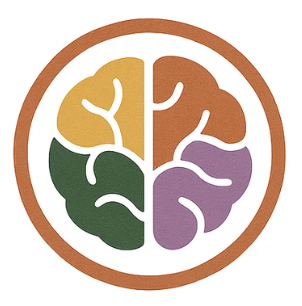Low-Cost DIY Visual Routine Board
Why I Created a Visual Routine Board
I designed a visual routine board as a practical tool to support my executive functioning needs as an autistic/ADHD individual.
Traditional planners and digital calendars often overwhelm me with their visual overload, complexity, and demand sustained focus. However, a physical board with movable magnets provides a clear, tactile, and low-effort way to structure my day. It allows me to externalize my mental load, reduce decision fatigue, and visually map out routines without overstimulation. Moving each magnet as I complete a task is not only satisfying—it reinforces a sense of momentum!
I find the board also helps me with transitions and task initiation, offering visual anchors that keep me grounded and oriented at the task at hand. It is intentionally simple, flexible, and calming—ideal for neurodivergent brains that thrive on predictability, clarity, and sensory-friendly design.
Benefits
To reduce mental load by visualizing your daily schedule
Honor your energy fluctuations and flows
Balance routine with autonomy–enough structure without restricting
Create visible clarity
Materials List
Magnetic whiteboard (at least 16x20”)
Magnetic strips (½” or 1” width, 10+ feet) OR magnetic sheets (4×6” or 5×7”, pack of 10+)
Pastel index cards for labels OR standard cardstock (8.5×11” or 12×12” sheets)
Scissors and ruler
Fine-tip pens
Washi tape for dividing the board (optional)
Note: The number of labels vary based on your routine, I had about 40-50 tiles.
The total cost for this setup is around $30–50.
Board Assembly
Cut strips from the magnetic roll or sheet about 1.75” to create label-size magnets for your board.
Cut the index cards or cardstock to fit on the size of your magnetic labels.
Peel adhesive backing and stick it to the back of the tile.
Write your tasks/routine steps on each tile with a permanent marker (you can also use a label maker).
Apply tiles to board & organize the way you prefer.
Organization
For my board, I organized by day of the week (Monday - Saturday/Sunday) AND time of day (e.g., morning, afternoon, evening).
Here are some other organization ideas that may work for you; however, this is completely customizable.
Option 1: Timeline View
Like a timeline: 8 slots = flow of the day
Each slot is one block (e.g., morning, mid-morning, early afternoon, etc.)
You move tiles into each slot at night or morning
The ones you finish can be moved to a DONE zone
Option 2: Column View (Days of Week OR Time of Day)
Morning Afternoon Evening
[ ] [ ] [ ]
Option 3: Level of Energy
Must-Do Low Energy Recharge Creative Flow
[ ] [ ] [ ] [ ]
In Closing
Planning and assembling this board was a rewarding creative project, and I highly recommend it to anyone who struggles with organization or feels overwhelmed by traditional or digital planning tools. It is low-cost, low-effort to build, and fully customizable to suit your individual needs.
If you decide to create one for yourself or someone you support, feel free to share your approach in the comments or our social media to help others in the community!
Making research and knowledge more accessible, one article at a time.
